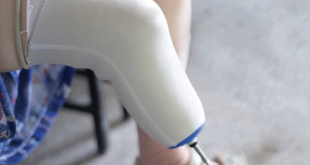 The term halitosis, also known as bad breath, or oral malodor, is used to describe unpleasant odor originating from the mouth. It creates social and psychological disadvantages in a person’s life, which could lead to social embarrassment and leave the individual reclusive, or occasionally, even stigmatized in society.
The term halitosis, also known as bad breath, or oral malodor, is used to describe unpleasant odor originating from the mouth. It creates social and psychological disadvantages in a person’s life, which could lead to social embarrassment and leave the individual reclusive, or occasionally, even stigmatized in society.
Halitosis is a condition causing a distressing effect on the daily life of an individual, and so the affected person may avoid socializing. The origin of this condition largely arises from bad oral hygiene. People use self-care products like chewing gum, mints, and sprays to decrease the disagreeable odor, and attempt to mask halitosis with pleasant fragrances, but these approaches are only a temporary solution and give short-lived satisfaction to the patient. Sometimes, the person who has halitosis may not even be aware of the condition, because they may have developed tolerance, and are usually identified by their partner, family person, or friends.
Usually, the major reason for bad breath emanating from the mouth is poor oral hygiene. Poor oral hygiene allows food particles to collect between the teeth, along with the gingival tissue and the surface of the tongue; then, naturally occurring bacteria in the mouth break down these food particles, releasing chemicals that have a strong odor. The number of bacterial species found in the oral cavity are over 500, and most of them are capable of producing odorous compounds that can cause halitosis. In these conditions, poor oral hygiene plays a key factor in the multiplication of halitosis-causative bacteria, which include Gram-negative species and proteolytic obligate anaerobes.1
Untreated deep carious lesions also retain food particles and dental bacterial plaque, leading to halitosis. Along with this, other factors that cause halitosis are misaligned teeth and large interdental areas (spaces between the teeth) retaining food debris, orthodontic appliances, and not regularly cleaning dentures, which can cause a buildup of microorganisms. Besides these conditions, inflammation of gingival and periodontal tissues creates sources for oral malodor.
Often, one observes malodor upon waking up from sleep, also called foul morning breath, or morning halitosis. It is caused by lack of activity of saliva and putrefaction of entrapped food particles by the accumulation of bacteria on the surface of the tongue, clinically recognized as coated tongue.
Saliva is a cleaning agent of the mouth that keeps bacteria at a manageable level, so reduction of the salivary flow negatively affects the self-cleaning action of the mouth, leading to halitosis. Almost 25% of the elderly suffer from dry mouth, causing an increased condition of oral malodor in the elderly population 2.This decrease in salivary flow can be due to medications like antidepressants, antipsychotics, antihypertensives, and even salivary gland diseases like diabetes, Sjogren’s syndrome, or during therapies like chemotherapy and radiotherapy.
Aside from these causes within the oral cavity, bad breath can be a symptom of an underlying disease from elsewhere in the body. Bad breath can be a byproduct of certain health conditions. These are limited cases, but can reveal important diseases or systemic problems. Some respiratory conditions, such as sinusitis, tonsillitis, pharyngitis, rhinitis, or lesions in the lower respiratory tract, such as bronchiectasis, lung abscess, or bronchogenic carcinoma, etc., may give rise to breath malodor.3 Halitosis can be indicative of underlying gastrointestinal disease, too. GI reflux, gastric and peptic ulcers, congenital broncho-esophageal fistula, Zenker’s diverticulum, carcinoma of the stomach, hiatus hernia, pyloric stenosis, duodenal obstruction, and steatorrhoea are the other causes of halitosis.4
Sometimes, there are cases of patients who imagine they have bad breath when they may not have it. This imaginary halitosis is called delusional halitosis. In this condition, the patient fears that his/her breath is offensive even after treatment, however, neither any clinician nor other people can endorse its existence. Such patients need psychological counseling and should be given enough time during the consultation, as it can be more difficult in these cases than real halitosis cases.
Proper investigation of these causes is important for total understanding of the management of this condition. Halitosis is sometimes discovered by the dental practitioner or primary care clinician examination. The clinical assessment of oral malodor is usually subjective examination, and is based on smelling the exhaled air of the mouth and nose and comparing the two (organoleptic assessment). Organoleptic assessment is considered as the “gold standard” to diagnose halitosis in a clinical setting.5
A more objective method is the analysis of breath samples by gas chromatography, or using portable VSC analyzers.
With proper diagnosis and identification of the etiology, steps can be created for a successful treatment for each patient seeking assistance. It is very crucial to get educated about the importance of good oral hygiene. A combination of tooth and tongue brushing has a remarkably beneficial effect in the reduction of bad breath. This home care removes residual food particles and organisms that cause putrefaction. Flossing teeth is also very important to keep interdental spaces free of plaque and food debris, thereby controlling halitosis.
If periodontal disease or multiple decayed teeth are evident, they should be treated as contributors to halitosis. Scaling and root planning are needed, because periodontitis causes chronic oral malodor. Professional periodontal therapy is the treatment of choice. Chlorhexidine is considered the gold standard mouth rinse for halitosis treatment. If there are untreated deep carious teeth, they should be treated, and if a person wears removable dentures, it is required to be taken out at night and properly cleaned before wearing it back the next morning.
Healthy individuals who have no history of halitosis and have perfect periodontal health show halitosis because of the retention of bacteria on the tongue surface. The tongue dorsum is the biggest reservoir of bacteria as a source of malodorous gases. The surface of the tongue has desquamated epithelial cells, food residues, and bacteria. The depth of the tongue papillae affects the biofilm coating on top, which prevents the cleansing action of saliva and promotes the growth of anaerobic bacteria, giving rise to halitosis.6 Due to these reasons, cleaning of tongue dorsum by brushing, tongue scraper, or tongue cleaner is important. Cleaning should be gently done on the tongue, so as not to damage the soft tissue. It is suggested to clean as far as possible, as most coatings are seen in the posterior portion of the tongue. Tongue cleaning also improves taste sensation, along with helping in the reduction of halitosis. If halitosis originates from non-oral causes, such as respiratory, gastrointestinal and hepatic, renal, endocrine, or hematological disease, consultation should be done with the appropriate specialist.
Halitosis is a condition causing a distressing impact on a person’s daily life, so it should be treated as soon as it is diagnosed.
 Medicosnext
Medicosnext




